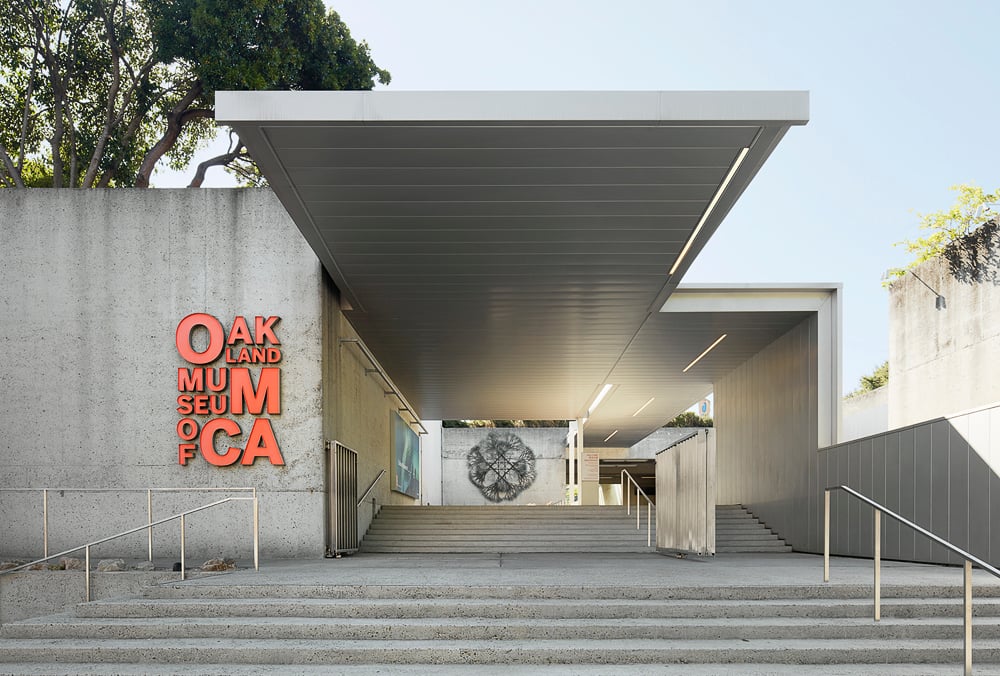
For most museums, success is scored in numbers—revenue, attendance, Instagram “likes.” But the Oakland Museum of California (OMCA), which caters to a broad swath of communities in the Bay Area, sought to define something more elusive, yet equally important: its own social impact.
Working with a group of social scientists, the museum devised an innovative plan to take stock of both its ability to connect with visitors and to foster connections between visitors themselves. The idea came after previous data collection efforts revealed a more thorough snapshot of the institution’s audience, which is one of the most diverse in the country. More than half of the museum’s visitors are people of color and nearly two-thirds are under 45 years old. Twenty-five percent come from a household that makes under $50,000 a year, while 41 percent come from one that tops $100,000.
“We had witnessed a significant change in our audience,” says OMCA director and CEO Lori Fogarty, noting particular increases in visitors of color, younger visitors, and visitors with families. “We realized, as we were doing this work and talking about the goals and outcomes and what success looked like, that we really needed to frame our work in a different way. It was more than increasing numbers or increasing the diversity of our visitorship. We were trying to do something that was much broader about the well-being of our community.”
The real question, Fogarty says, was, “what is the difference we are trying to make in the world?”
Lori Fogarty. Photo: Terry Lorant.
What OMCA landed on was social impact, the “idea that people have empathy and feel a sense of connection with each other,” the director explains. The institution arrived at this conclusion after being inspired by research conducted across numerous other industries, from public health to library studies. Of particular note was a 2014 study produced by the UN that posited that social cohesion is necessary in addressing large, systemic problems like poverty, homelessness, or illiteracy.
“This is coming at a time when museums and other cultural institutions are really trying to make a case for their existence,” says the OMCA’s associate director of evaluation and visitor insight, Johanna Jones, who led the project. “We know we make a difference in people’s lives, now we need to really demonstrate it through measurable metrics.”
The institution has released the results of its first study, conducted over the 2019 fiscal year. The results were, on the surface, very positive: 97 percent of the over 1,700 surveyed visitors felt “welcome and at ease” at the museum, while 95 percent believed in the institution’s commitment to telling “stories from different communities.” Yet, while those metrics painted the kind of rosy, broad-strokes picture that many museums would happily call their own, the OMCA was in search of a more nuanced understanding of its impact.
The Oakland Museum of California. Courtesy of the OMCA. Photo: Odell Hussey Photography.
From the newly acquired data, Jones and her team formulated a “social impact score” that, measured across different demographics, yielded a more refined portrait of the museum’s relationship with its visitors. The researchers found that women, museum members, and return visitors reported notably high scores, while people of color and those who come from homes with incomes below the $50,000 threshold scored low. (There was, of course, overlap between these categories.)
In other words, though the results were largely positive, they were also burdened by the same divisions of race and class that cultural institutions have long wrestled with.
“I think the study and the results were really gratifying for us, both for what they affirmed and for what they pointed out that we needed to learn,” says Fogarty.
The Oakland Museum of California. Courtesy of the OMCA. Photo: Odell Hussey Photography.
Indeed, the study is just the beginning of a larger, more holistic initiative that will play out over the course of years.
“The survey will continue and it’s something that we can measure through time, see if we’re making gains or where there’s still work to be done,” says Jones. “That was always the intention—it wasn’t a one-time study, which is easy to do. It’s ongoing. We want to embed it in our work so it can inform us moving forward.”
“We’ve been trying to do the work over the last several years of focusing on diversifying our audience,” adds Fogarty. “Now we have some data that says we may need some different techniques with different audiences. We can’t bring a ‘one-size-fits-all’ approach to the experiences here.”